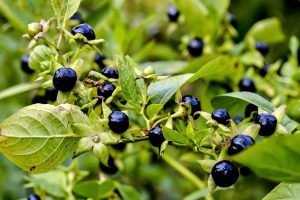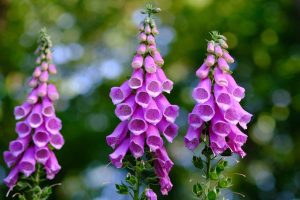If you’re looking to add a little danger to your magical practice, look no further than the world of poisonous plants! While witches have long been associated with the use of herbs and plants for various purposes, not all of these plants are safe for human consumption.
Some of the most famous plants in witchcraft are also some of the deadliest. From the tempting sweetness of deadly nightshade to the creepy human-like form of mandrake, these poisonous plants are not for the faint of heart.
So, if you’re feeling brave (or just a little bit reckless), come with us on a journey through the world of the most toxic plants used in witchcraft!
History of Witches and Herbs
But first, let’s talk about the relationship between witches and herbs. Throughout history, plants have always been used for medicinal and spiritual purposes. But, many of these uses were associated with witchcraft.
In ancient times, witches and other practitioners used herbs for divination, healing, and casting spells. They believed that certain plants had specific properties. So, they could be used to influence a person’s physical or emotional state. These practices continued through the Middle Ages and the Renaissance. However, in these times, witchcraft already started to associate with malevolent practices.
Despite the persecution of witches, the use of herbs and plants continued in secret. Many of the traditional uses of these plants have been passed down through generations of practitioners. Today, many modern witches continue to use herbs and plants in their magical practices, both for their medicinal properties and for their spiritual symbolism.
Deadly Nightshade (Atropa belladonna)

You may know it as Belladonna, but that doesn’t change a thing. Deadly nightshade is one of the most infamous plants associated with witchcraft. Its shiny black berries have a sweet taste that can be deceiving, as ingesting just a few can be fatal. Deadly nightshade contains several toxic compounds. Including atropine and scopolamine, which can cause hallucinations, delirium, and respiratory failure.
Mandrake (Mandragora officinarum)
Ha, the famous Mandrake! This plant has a long history of use in witchcraft because of its distinctive root that spookily resembles a human form. While the root is the most commonly used part of the plant, all parts of the mandrake contain toxic alkaloids. These toxins can cause delirium, convulsions, and even death. Ingesting even a small amount of mandrake can be dangerous, so extreme caution should be exercised when handling this plant.
Foxglove (Digitalis purpurea)

Foxglove has an unforgettable appearance. With its tall spikes of purple flowers, it has been used in witchcraft for its medicinal properties. However, the plant also contains toxic cardiac glycosides. This one can cause heart failure and death! Ingesting any part of the plant can be dangerous. Hence, extreme caution should be exercised when handling foxglove.
Hemlock (Conium maculatum)
Hemlock, a.k.a. poison hemlock, is a highly toxic plant that has been used in witchcraft for centuries. The plant contains a potent toxin called coniine. This toxin can cause respiratory failure and death. Ingesting just a small amount of hemlock can be fatal. So it should never be consumed or handled without proper protective gear.
Datura (Datura stramonium)
Datura or jimsonweed or by the witches’ preferred name devil’s snare, is a plant that has been used in witchcraft. It is popular for its hallucinogenic properties. The plant contains several toxic compounds. Including atropine and scopolamine, which can cause delirium, hallucinations, and even death. Ingesting datura can be extremely dangerous, and it should only be used under the supervision of a trained practitioner.
In conclusion, while the use of plants in witchcaft can be a powerful and transformative practice, but it is important to remember that not all plants are safe for human consumption.
The plants mentioned above are just a few examples of poisonous plants used in witchcraft, and many others can be just as dangerous. It is important to do your research and consult with a trained practitioner before using any plant in your magical practice. Always handle these plants with extreme caution and respect, as they can be deadly if used improperly.
Referances:
- Cornell Botanic Gardens: “The Supernatural Side of Plants“
- Britannica: “Mandrake | Description, Species, & Traditions“
- Royal Horticultural Society: “Foxglove”

